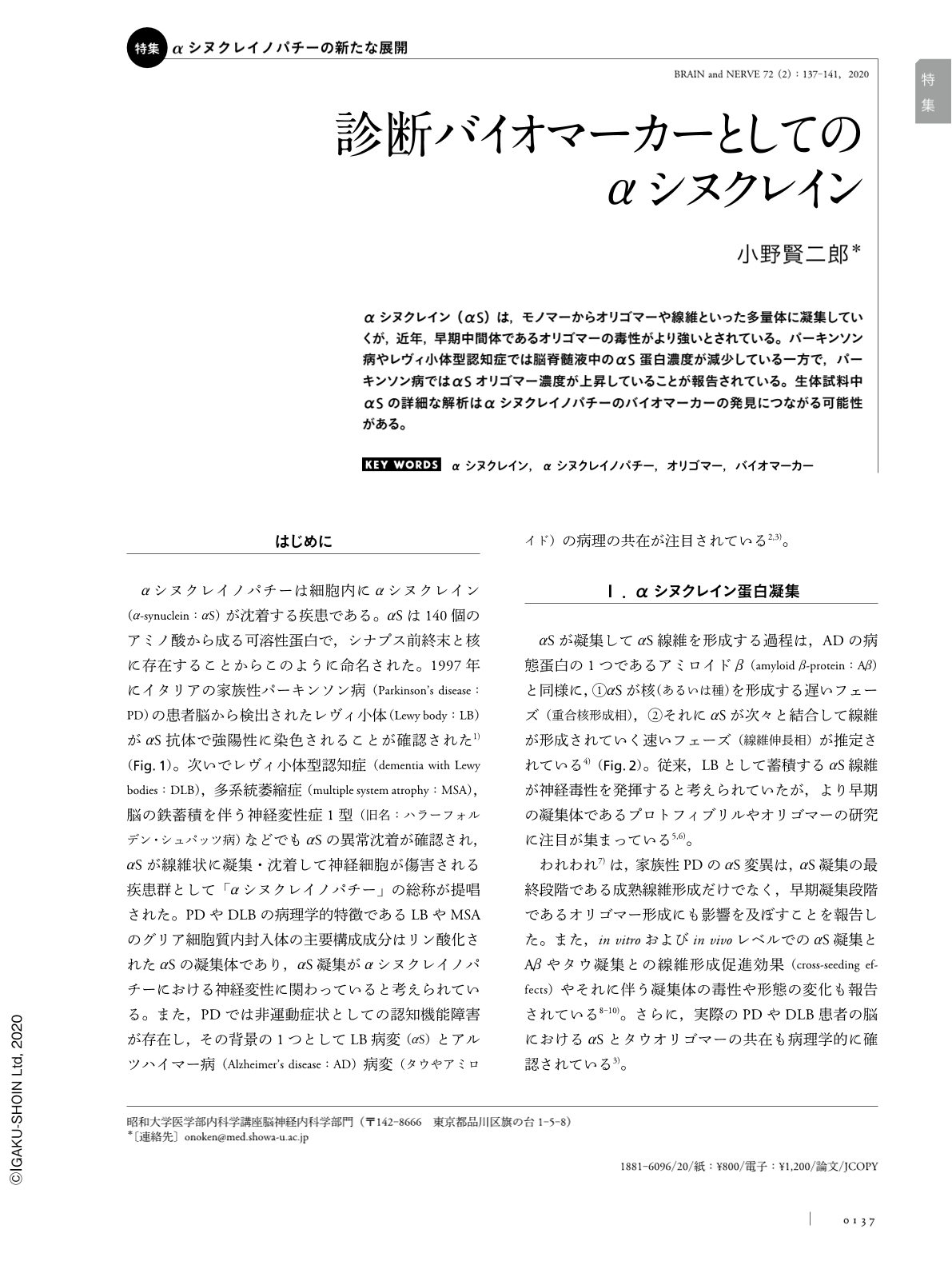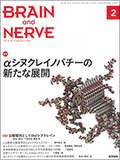Japanese
English
- 有料閲覧
- Abstract 文献概要
- 1ページ目 Look Inside
- 参考文献 Reference
αシヌクレイン(αS)は,モノマーからオリゴマーや線維といった多量体に凝集していくが,近年,早期中間体であるオリゴマーの毒性がより強いとされている。パーキンソン病やレヴィ小体型認知症では脳脊髄液中のαS蛋白濃度が減少している一方で,パーキンソン病ではαSオリゴマー濃度が上昇していることが報告されている。生体試料中αSの詳細な解析はαシヌクレイノパチーのバイオマーカーの発見につながる可能性がある。
Abstract
Although α-synuclein protein (αS) undergoes aggregation from a monomer to assemblies, such as oligomers, protofibrils, and mature fibrils, the early intermediate aggregates, that is, oligomers, are considered to be the most toxic species in the pathogenesis of α-synucleinopathies, including Parkinson's disease (PD) and dementia with Lewy bodies (DLB). While it has been reported that the αS concentration in cerebrospinal fluid (CSF) is decreased significantly in patients with PD and DLB, there have been reports of the αS oligomer concentration being elevated in the CSF of patients with PD. Moreover, it is supposed that the αS oligomer concentration is also elevated in the blood of patients with PD. Recently, it has been reported that lower cerebrospinal β-amyloid (Aβ)1-40, Aβ1-42, and αS levels are associated with cognitive decline in PD. Further combination studies of the CSF and blood may lead to the establishment of the candidate αS as a biomarker for α-synucleinopathies, including PD and DLB.

Copyright © 2020, Igaku-Shoin Ltd. All rights reserved.


